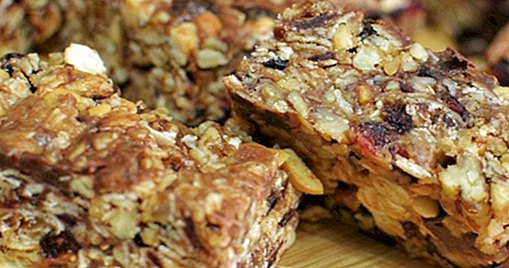Culinary herbs in the kitchen
 Although one of the main uses of many plants and herbs is its medicinal use, given that they provide us with very interesting medicinal virtues, they can also be used at the time of enjoying the healthy cuisine more natural and healthy
Although one of the main uses of many plants and herbs is its medicinal use, given that they provide us with very interesting medicinal virtues, they can also be used at the time of enjoying the healthy cuisine more natural and healthy
This is the case, for example, of the so-called culinary herbs; generally aromatic plants that, in addition to properties and benefits, provide a different flavor and aroma to the dishes and recipes to which they are added.
A clear example of the use of these culinary herbs in the kitchen we find it in Mediterranean cuisine, or in a great variety of cuisines from many countries that stand out for the application of herbs and spices in their dishes (a good example is Indian cuisine).
Culinary herbs and their use in the kitchen
- Basil: it brings a strong now to the dishes, being ideal to combine them with pasta, rice, tomatoes, eggs, eggplants and peppers. It stands out for its digestive effect.
- AniseIt is usually an herb used in dessert and sweets, but also in salty dishes. It is able to enhance the flavor of salads and boiled vegetables, while in desserts it provides a slightly more sweet and aromatic flavor. As regards the properties of anise, its digestive virtues and flatulence stand out.
- Dill: it has a rather delicate aroma and a slightly spicy flavor. It is ideal to add it to dishes with potatoes, fish (like salmon), soups and peas. It is useful against fluid retention and digestive problems.
- Tarragon: similar to parsley, it brings flavor to vegetables, salads, mustards and sauces. It contributes digestive effect, and as we indicated in our note on alternatives to salt, it can be a good substitute for salt.
- Fennel: similar to anise, but with a slightly stronger flavor. It is useful in salads, fish, soups or desserts (especially with apple). It contributes a digestive effect, and is ideal in too fatty dishes.
- Laurel: improves the taste of dishes with meat and broths, such as stews or stews. Of course, although it provides digestive benefits against flatulence, it can be toxic, so it should be used sparingly.
- Oregano: together with tarragon, it is one of the most common herbs in our kitchen. In fact, it is the best known of Italian cuisine for its use in pastas, pizzas or salads, thanks to its aromatic power.
- Parsley: it is another of the most used herbs, providing a different touch to the dishes to which it is added. It combines very well with salads or dishes with eggs. It helps to purify and purify the blood.
- Thyme: used to flavor a wide variety of dishes, including zucchini, potatoes or aubergines. It provides an interesting digestive and stimulating effect.
If you have interested this note we advise you to read our special about the benefits of spices.
Image | brookpeterson This article is published for informational purposes only. You can not and should not replace the consultation with a Nutritionist. We advise you to consult your trusted Nutritionist. ThemesAromatic herbs


